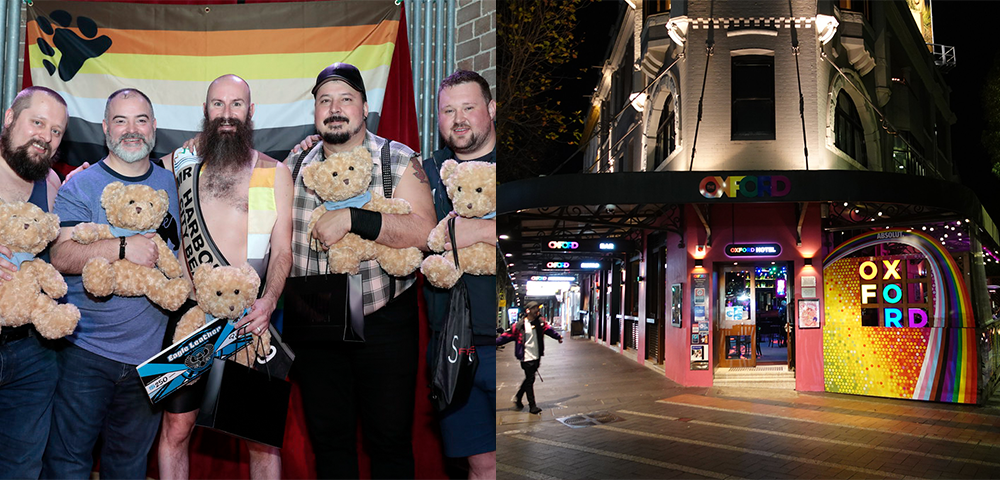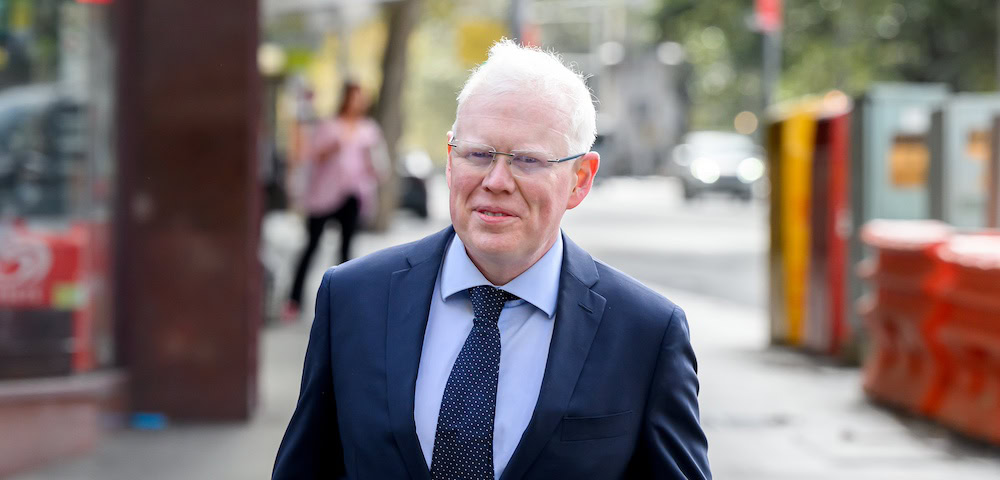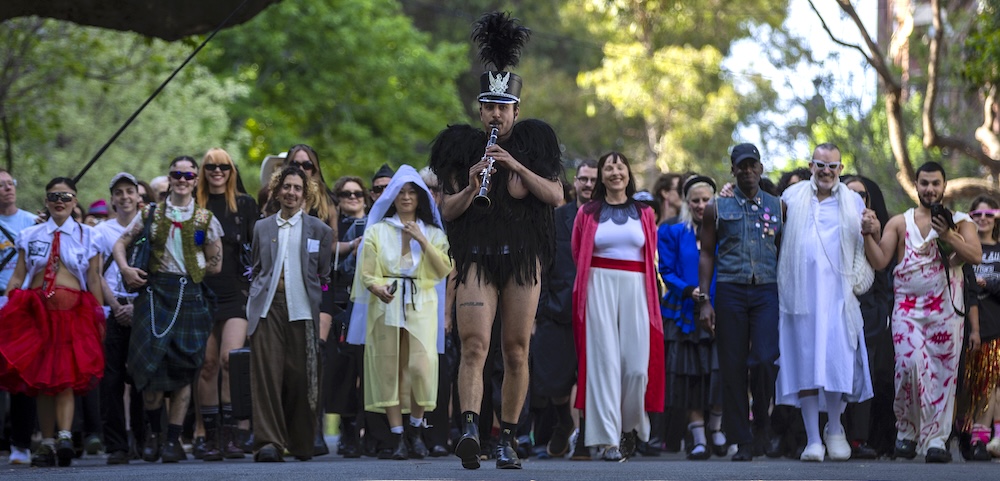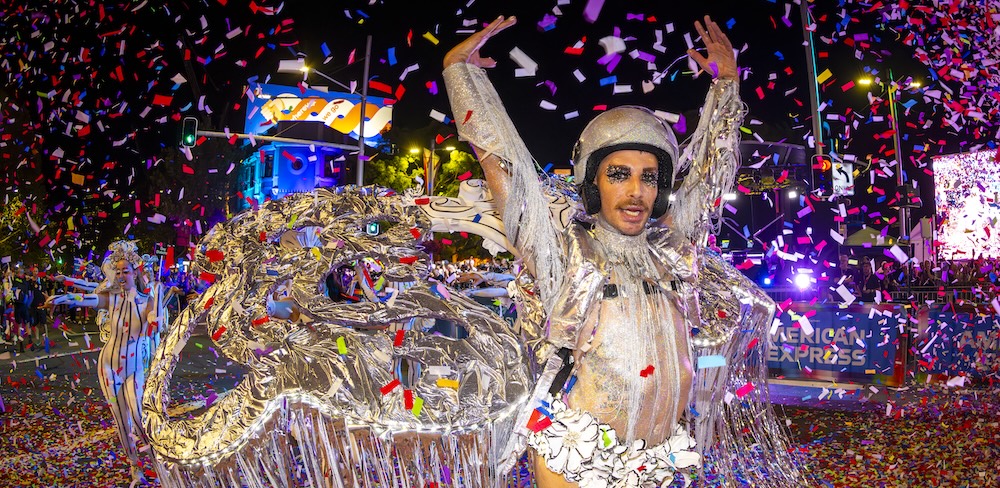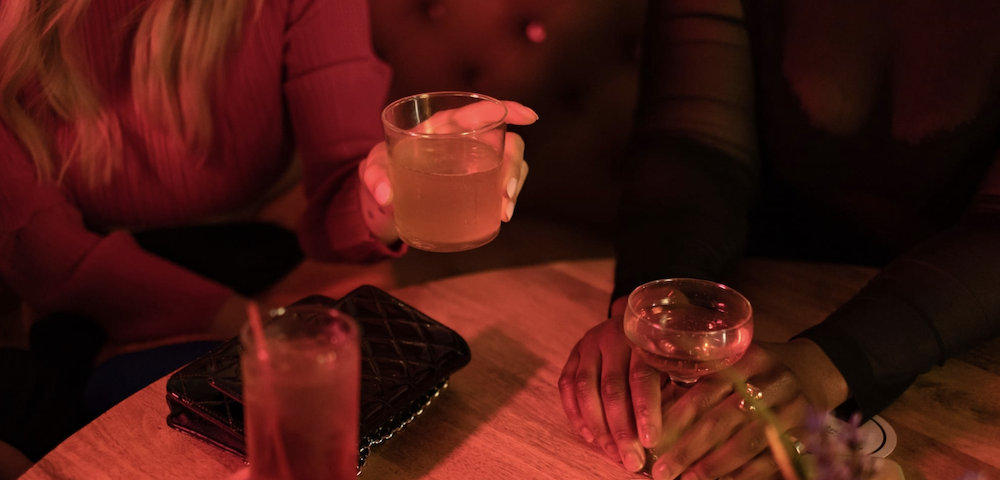
A Festival Diary
The Belvoir Street Theatre foyer was soaked with celebrities for the 50th anniversary performance of a theatre classic, with Hugo Weaving and Bob Carr bumping backs with David Wenham and Governor Marie Bashir. It was hot in the foyer, the atmosphere aerated only by champagne bubbles and wafts of cologne, but the crowd lingered. Rumoured guests Baz Luhrmann, Nicole Kidman and Rachel Griffiths were yet to arrive, with photographers on the front steps ready to snap (in a number of senses of the word). We waited and waited, but they failed to transpire. And so, engulfed in an aura of irony, we took our seats for Waiting For Godot.
There was much to savour in this production. Director Neil Armfield stated his intention get back to the basic truths about the play (a bold directorial claim, always a little irritating) although his production certainly succeeded in allowing Samuel Beckett’s words to resonate clearly.
Max Cullen and John Gaden proved complementary actors. Cullen, as usual, was not dull on stage for a moment, although the unpredictable quality of his performance left Estragon a little opaque as a character. Gaden took no such chances, and presented a finely drawn yet passionate Vladimir. They looked like clowns and there was more than a swig of vaudeville -“ at one point I expected them to break into We’re A Coupla Swells -“ but the mix worked.
Director Benedict Andrews was in the audience for Godot and the next night Neil Armfield returned the favour by taking an uncomfortable seat for Andrews’ production of Endgame for the Sydney Theatre Company. Uncomfortable, because the Wharf 2 Theatre was transformed into a theatrical torture chamber. The space was halved, with low ceilings, minimal air circulation and deliberately nasty and lumpy seating installed. The show ran for two hours without interval.
This is a solidly acted production with sets, costumes and lighting all contributing towards a whole that is aptly bleak and unsettling. In the possibly post- apocalyptic world of Hamm (Jacek Koman), his servant Clov (Matthew Whittet) and his garbage-binned amputee parents Nell (Lynne Murphy) and Nagg (Peter Carroll), life has been reduced to simply waiting for death. It’s Waiting For Godot without the laughs (!), paced ultra-slow but with incredible attention to emotion and to the text. From a director who once placed a Star Wars action toy under a spotlight during his production of The Three Sisters, this is a remarkably straightforward experience.
On the other hand, Andrews’ attempt to project Hamm’s claustrophobic world onto an audience is nigglingly pretentious. Andrews successfully creates a stifling atmosphere, and the STC should be congratulated for creating a smaller space for an intimate four-hander. Perhaps inadvertently however, the space simply resembles any number of small and dodgy theatres around Sydney. So why not just rent out a smaller theatre? If alienation (in the Brechtian sense) is Andrews’ intention, the project fails to account for audiences who are practiced at blocking out crap seating and a lack of airconditioning so that they can enter a different world, a theatrical world. Watching the horrible and nihilistic end of Hamm is gruelling enough, especially given the terrific performances by Whittet and Koman.
The next three events for the festival were less depressing: they at least offered the possibility of resurrection after struggle and death. La Pasi?eg?an Marcos (The Passion According To St. Mark) was commissioned way back in 1996, with Argentina-born, Jewish and now US resident Osvaldo Golijov invited to interpret the story of Christ with a Latin American edge. Over 90 musicians took part in the 90 minute event, which incorporated choral pieces and Capoiera dance.
It was Golijov’s intention to create a work that reflected a black Jesus; with the text consisting of passages from the Gospel According To Mark as well as Latin American poetry. In the tradition of Bach’s Passions the work featured a variety of speakers, although Golijov went further. The Aria of Peter’s tears was sung by soprano Samia Ibrahim Messanne and the sermon on the Mount of Olives was belted out in Latin rhythms. Percussionist Mikael Ringquist performed with such intensity that he broke a drumstick. Interstitial dances by Reynaldo Gonzalez Fernandez and Deraldo Ferreira offered a rare exposure of Capoeira movement, and their inclusion only added to Golijov’s notion that the work constituted an enactment, as occurred in the Middle Ages. If his reference included the medieval morality plays then his Passion utterly captured the spirit of religious dramatisation. To my mind it also had broad appeal, was utterly accessible and captured the guts of a ripping yarn (in anyone’s language). Sadly, Pasi?nded on Tuesday evening.
On leaving the House, I walked past the remnants of the Improbable Theatre production of Sticky, which I caught in full the next night. Festival Director Brett Sheehy’s free events proved hugely popular last year, and this year the crowds arrived early. The show went off without a hitch -“ a mixture of pyrotechnics and costumed spectacle, in which vast streams of sticky tape were used to create a giant spider and web, and eventually a tower. As such chevoos go, this seemed to please the crowd, although it was a little messy both conceptually (and environmentally!) A performer dressed as a fly was flown in thanks to a crane, and consumed by the spider. This soon became a tower (or possibly a jellyfish, penis or giant mutated arachnid) which was set alight in parts with fireworks, and proceeds to burn. Visions of the World Trade Centre filled my thoughts however, especially when the tower in fact collapsed, releasing a multitude of ghostly balloons and the resurrected form of the fly, who blessed the crowd with glitter.
Of course the event was conceived long before 9.11.01, just as the Mark Morris Dance Group’s V -“ a paeon to victory dedicated to New York City -“ was devised before the towers fell. Another opening, another celebrity-drenched foyer, and this time director Phil Noyce, actors Steve Bisley and Jacki Weaver and a bubbly Leo Schofield tittered outside the Parade Theatre at Kensington. As with Godot, there was a delay, and Sheehy eventually appeared on stage to make an announcement. The resurrection had been cancelled. More specifically, two dancers were injured in rehearsal, with the subsequent cutting of an eight-minute segment called Resurrection. Nobody seemed to mind.
The MMDG were highly skilled, and the segments ranged from the lyrical to the parodic. In Foursome, Morris himself danced in polo shirt, beige shorts and sandals and socks, accompanied by three other blandly attired male dancers. Taking a trip through the daggiest of folk dance cliches, the work touched on notions of male gender performance, although only lightly. Grand Duo and V were strongly ballet-influenced, with a frequent use of repetition and simplicity of movement. It was an aesthetically pleasing though not particularly challenging night of dance.
Â
Waiting For Godot runs until 23 February at the Belvoir Street Theatre. Phone 9699 3444 for bookings. Endgame continues until 2 February at Wharf 2, Sydney Theatre Company. Phone 9250 1777 for bookings. The Mark Morris Dance Group continues until 15 January at 8pm at the Parade Theatre, 215 Anzac Parade, Kensington. Phone 9266 4826 for bookings. Visit www.sydneyfestival.org.au for more information about all Sydney Festival 2003 events.




